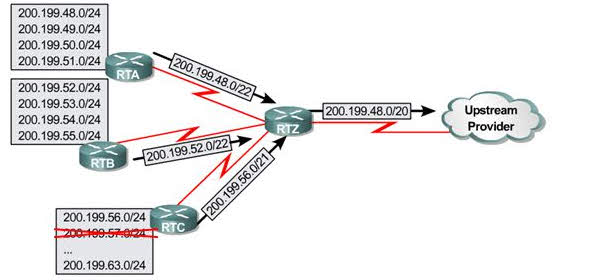In the complex world of computer networking, route flapping is a phenomenon that poses significant challenges to the stability and efficiency of dynamic routing environments. Essentially, route flapping occurs when a network path alternates between available and unavailable states in rapid succession, causing dynamic routers to continuously update their routing tables. This condition can lead to increased network latency, unnecessary bandwidth consumption, and in severe cases, network outages.
In this article, we will delve into the intricacies of route flapping, exploring its causes, implications, and strategies for mitigation to ensure network reliability and performance.
Table of Contents:
- What is Route Flapping?
- Impact of Route Flapping on Network Performance
- Mitigating Route Flapping
- References

1. What is Route Flapping?
Definition and Overview
Route flapping refers to the rapid oscillation of network paths, causing routes to appear and disappear from routing tables in quick succession. This behavior is often observed in dynamic routing environments where routers advertise the availability of network paths based on real-time conditions. When a route becomes unstable—due to reasons such as hardware failures, link instability, or configuration errors—routers begin to advertise alternate paths. If the unstable route quickly recovers, only to fail again shortly after, this leads to the route being advertised and withdrawn repeatedly, a condition known as flapping.
Causes of Route Flapping
Several factors can contribute to route flapping, including but not limited to:
- Physical Link Issues: Problems with physical network components such as cables, interfaces, and connectors can cause intermittent connectivity failures, leading to flapping.
- Configuration Errors: Misconfigurations in network devices or routing protocols can introduce instability in route advertisements.
- Unstable Network Conditions: External factors like electromagnetic interference, physical damage to infrastructure, or high traffic volumes can strain network links and cause flapping.
- Router Performance Issues: Routers with insufficient processing power or memory may struggle to handle frequent route changes, exacerbating route flapping conditions.
Understanding the causes of route flapping is crucial for network administrators and engineers tasked with maintaining the stability and efficiency of internetworks. By identifying and addressing the root causes, it is possible to reduce the occurrence of route flapping and its associated challenges, ensuring smoother operation of dynamic routing protocols and overall network performance.
Route Flapping Example

Route flapping occurs when a router interface alternates rapidly between the up and down states and it can cripple a router with excessive updates and recalculations. However, the summarization configuration prevents the RTC route flapping from affecting any other routers.
While the RTC may be kept busy dealing with its own route flap, RTZ, and all upstream routers, are unaware of any downstream problem.
Summarization effectively insulates the other routers from the problem of route flapping.
Video: Problems that can occur with routers (Flapping and Looping)
Two examples are routing loops and route flapping. Routing loops can cause packets to circle in the network without ever reaching their destination. Route flapping can cause routers to change their minds frequently and lead to a lot of unnecessary routing announcements.
2. Impact of Route Flapping on Network Performance
Network Instability and Congestion
Route flapping significantly contributes to network instability by causing rapid changes in the routing topology. As routes are advertised and withdrawn, routers must process and propagate these updates across the network, leading to increased CPU and memory usage. This, in turn, can slow down the overall response time of the network, resulting in latency and packet loss. Moreover, the constant fluctuations can trigger congestion avoidance mechanisms prematurely, further degrading network throughput and reliability.
Effects on Routing Protocols and Network Resources
The impact of route flapping extends to the behavior and efficiency of routing protocols. Protocols like BGP (Border Gateway Protocol) and OSPF (Open Shortest Path First) must continually process route updates, which can overwhelm router resources and lead to suboptimal routing decisions. For BGP, frequent updates can cause route churn, affecting global routing tables and potentially impacting networks far beyond the initial source of instability. This excessive processing not only taxes network resources but can also lead to the propagation of unstable routes, affecting the end-to-end data path quality.
3. Mitigating Route Flapping
Techniques and Best Practices
Mitigating route flapping involves a combination of technical strategies and network design best practices:
- Enhanced Network Monitoring: Implement comprehensive monitoring tools to detect early signs of instability and identify flapping routes.
- Physical Infrastructure Improvements: Regularly inspect and maintain physical components to prevent link failures that can lead to flapping.
- Configuration Management: Apply meticulous configuration practices to avoid misconfigurations that cause flapping. Utilize automation to ensure consistency across devices.
- Network Design Considerations: Design network architectures that provide redundancy without introducing unnecessary complexity. Strategic placement of redundant links can help avoid single points of failure that lead to route flapping.
Implementing Route Dampening
Route dampening is a specific technique used to reduce the impact of route flapping, particularly in protocols like BGP. By temporarily suppressing the advertisement of unstable routes, route dampening helps stabilize the network:
- Thresholds and Penalties: Route dampening assigns penalties to routes that flap, increasing exponentially with each flap. Once the penalty exceeds a certain threshold, the route is suppressed.
- Suppression and Reuse Timers: Suppressed routes remain inactive for a specified period, allowing the network to stabilize. If the route remains stable for the duration of the reuse timer, it is re-advertised.
- Configuration and Tuning: Effective implementation of route dampening requires careful configuration and tuning of thresholds, penalties, and timers to balance stability with the need for accurate routing information.
4. References
- Books:
- “Internet Routing Architectures” by Sam Halabi
- “BGP Design and Implementation” by Randy Zhang and Micah Bartell
- RFCs: